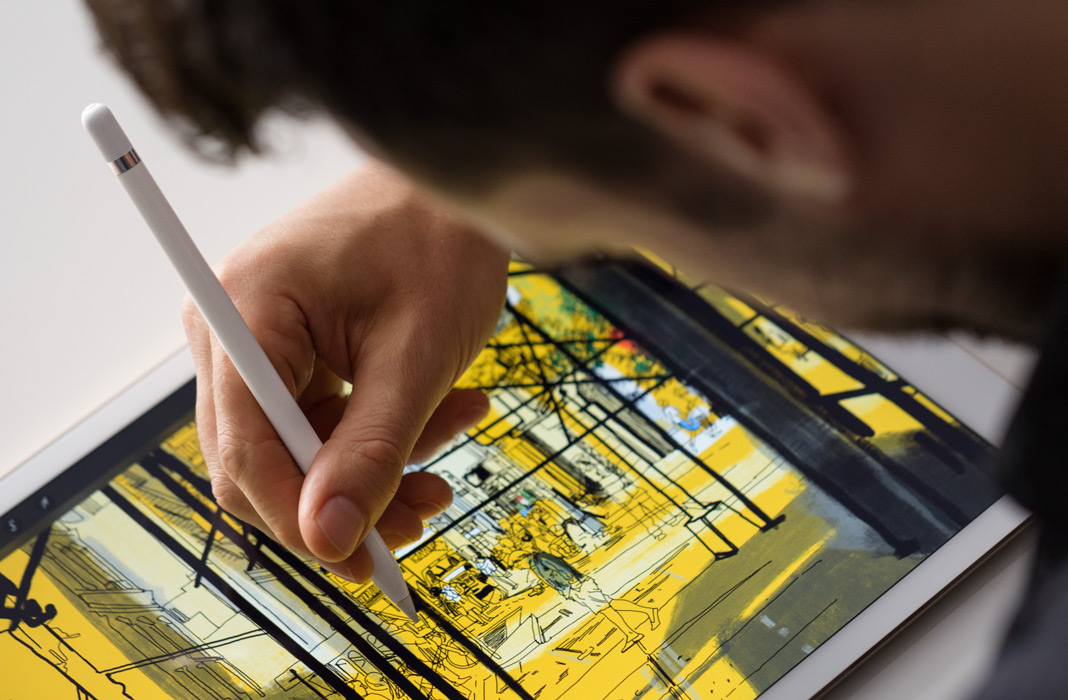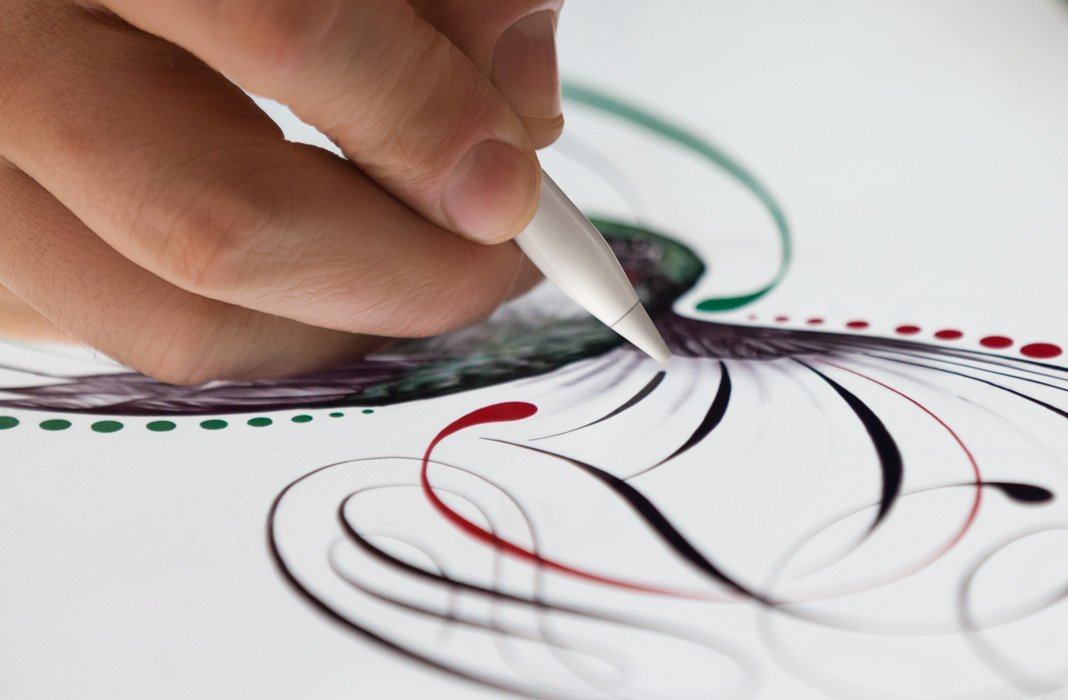Why I'm excited--and a little nervous--for the Apple Pencil stylus

Yes, it's true: Apple announced a stylus for the iPad. Ahem, excuse me: A Pencil. At no point during Wednesday's announcement did the company use the dreaded S-word, preferring "pencil," "device," and a few other monikers. But a stylus the Pencil is, and an exciting one at that.
I've been writing for almost five years now about why Apple should make a pressure-sensitive stylus for the iPad, and now that it's come, I cannot wait to get my hands on it.
Questions and curiosities
Rene's in the Bill Graham Civic Auditorium trying out the Apple Pencil as I type this; I likely won't be able to take a spin with the Pencil until later this year when it's released. But before Rene disappeared into the hands on area I texted him an obscenely long list of curiosities about Apple's new pen:
- Will it incorporate palm rejection, so you can rest your hand on the screen while drawing?
- Will you be able to tap and draw at the same time?
- How bad is the latency between drawing lines and having them appear?
- Can you write quickly without crazy tapping noises driving you insane or slanting your writing?
- How good is the pressure sensitivity?
- Will it work with older iPads? (I'm guessing no.)
There's also the question of whether we'll even get hands-on time with the Pencil yet. The stylus still has two months until it ships, and it's a bit telling to me that we didn't see an illustration demo on-stage—or really any firm examples, outside of product video, of the device's pressure sensitivity features.

We'll know all these things soon, and they're the important questions to ask: There are many styluses out in the world for the iPad right now, and all get at least some aspects of that list correctly, failing horribly in others. If Apple truly has managed to put together a pen that has great pressure, low latency, and comfortable writing, the company could change artists's digital workspaces for the better.
The benefits of an Apple-made stylus
Until now, artists and photographers who truly wanted pro-caliber drawing were confined to tablets like the Wacom Cintiq—which hooks directly into a computer, or its Android version, the Cintiq Companion—or the Microsoft Surface. (Or even Frankenstein creations like the ModBook.)
These aren't bad options for pro artists at all—but if they have Apple products elsewhere in their ecosystem, it makes it more difficult to switch back and forth from laptop to desktop to artist's tablet and back. It also reduces the need for an iPad in the ecosystem at all—if you already own a Surface for drawing, you might as well lug around the Surface for your other tablet works.
Master your iPhone in minutes
iMore offers spot-on advice and guidance from our team of experts, with decades of Apple device experience to lean on. Learn more with iMore!
The iPad Pro potentially changes all of that. I don't think it's going to spur legions of Surface and Cintiq-users to dump their current solution right away. But if the iPad Pro and the Pencil can offer an even closely-comparable experience to that of working on a Cintiq, it opens up a new option when upgrading, and a very attractive one at that.
Combine the iPad's third-party app ecosystem with the power of pressure-sensitivity, and artists can easily draw and work on images in their favorite programs without worrying if that program has specific SDK support (as is the issue with many styluses today) or terrible latency. They can work in their favorite programs and use Handoff to send their work to the Mac, wirelessly.
Heck, they may even be able to directly integrate it back to their Mac. Apps like Astropad let users turn their iPad into a Cintiq-like interface for OS X; combine that with a pressure-sensitive Apple stylus, and you have incredible control over any piece of digital artwork combined with the rendering power of your Mac.
There are plenty of other potential uses for an excellent Apple Pencil outside of the artist ecosystem: film editing, enterprise productivity, single-purpose site-specific apps—the possibilities are endless.
But the stylus has to be good. Not just good—exceptionally good.
What about third-party styluses?
Contrary to popular belief, I don't think the Pencil will kill the third-party stylus. It's for the Pro only, and plenty of people with limited budgets and desire for smaller iPads may still want styluses for simple writing or sketching tasks. But depending on what we find out about the Pencil's tech—and how it interacts with that new iPad Pro screen—it may open up some interesting competitive angles. If Apple decides to offer APIs for any of its advances in screen mapping, for instance, that could be a huge boon for stylus-makers.
Either way, I don't expect to see the third-party stylus die anytime soon—though it may evolve.
Will it sketch?
As soon as I get my hands on a Pencil, I'll write about all this and more. Until then, I'm going to hope, wait, and continue to be excited that Apple's taken a firm step in this direction.
Serenity was formerly the Managing Editor at iMore, and now works for Apple. She's been talking, writing about, and tinkering with Apple products since she was old enough to double-click. In her spare time, she sketches, sings, and in her secret superhero life, plays roller derby. Follow her on Twitter @settern.

